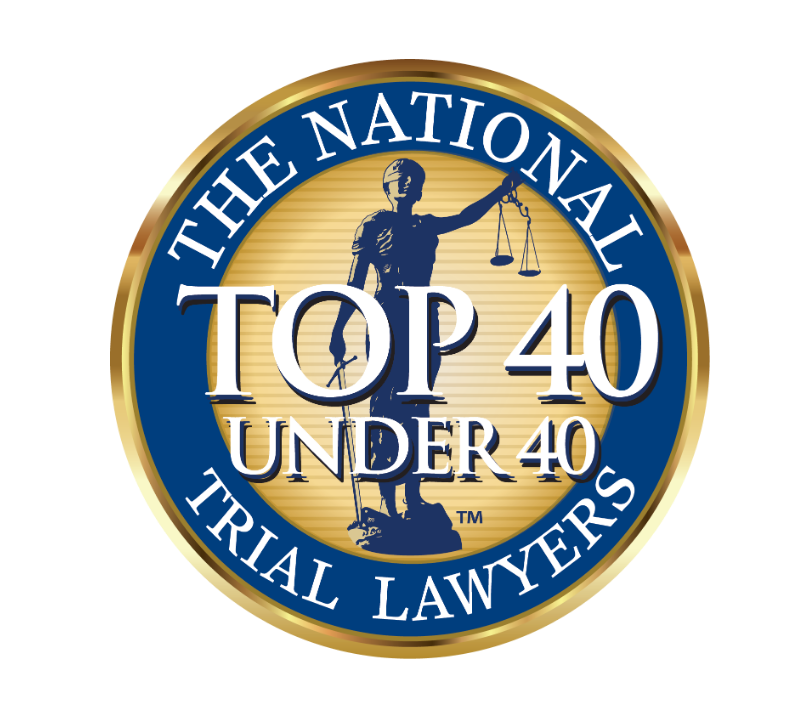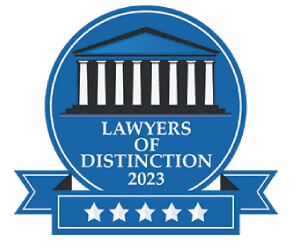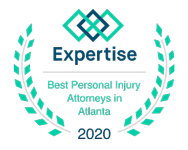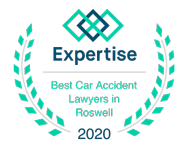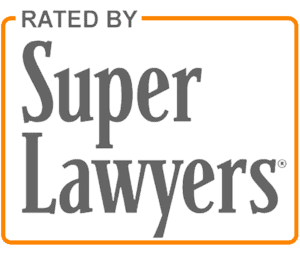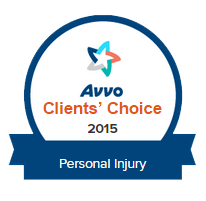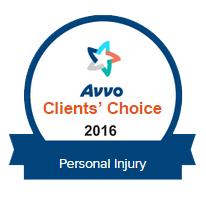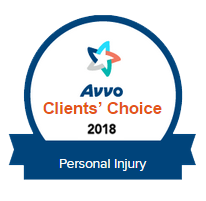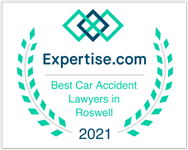The hours and days following a car accident can be a lot to deal with, especially when another vehicle rear-ends you, causing a subsequent collision with the car in front of you. In these instances, who is liable? The short answer is it depends on state laws and the circumstances of the accident.
If you or a loved one has been injured in a rear-end accident, reach out to an experienced car accident attorneys in Atlanta for assistance.
Schedule a Free Initial Consultation Today!
The Dynamics of Multi-Car Accidents
In multi-car accidents, particularly when another vehicle hits you from behind and collides with the vehicle in front of you, one of the main determinations is who is liable for the accident and resulting damages.

At the heart of these situations is the concept of a chain reaction. This term describes an incident where one event sets off a series of subsequent events. In the context of a multi-car accident, this usually begins with one vehicle colliding into the rear of another, causing that vehicle to hit the one in front of it. It's a domino effect that happens in a matter of seconds.
Typically, in such scenarios, the driver who initiates this chain reaction – in this case, the one who rear-ended you – is often considered primarily responsible for the accident. This perspective is grounded in a basic traffic law: drivers must maintain a safe following distance.
This safe distance allows a driver enough time and space to react to traffic conditions and stop their vehicle to avoid a collision. When a driver fails to maintain this safe distance and, as a result, rear-ends the vehicle in front of them, many consider this a failure to uphold this fundamental driving responsibility.
However, determining liability in multi-car accidents is rarely that easy. Several factors can complicate the assessment of fault. For instance, weather conditions and road quality factored into the behavior of other drivers.
Also, the specific actions of each driver in the moments leading up to the accident play a significant role. Did they brake suddenly? Were they distracted? Were there any mechanical failures? All these elements come together to form a comprehensive understanding of the accident.
You should always note that while people often perceive the driver who initiated the chain reaction as liable, this does not automatically absolve other involved drivers from potential fault. They examine each driver's conduct to ascertain if they also contributed to the accident's severity or neglected to take reasonable steps to avoid it.
In such cases, the role of evidence becomes important. Traffic camera footage, vehicle damage, skid marks on the road, and witness statements are all used to reconstruct the sequence of events and establish a clear picture of how the accident unfolded. Moreover, professional testimony from accident reconstruction specialists and medical professionals can further enhance the understanding of the incident.
These diverse sources of evidence collectively provide:
- A comprehensive perspective.
- Aiding in determining fault and assessing the extent of injuries.
- Ultimately, this contributes significantly to building a robust case supporting your claim.
Understanding the dynamics of multi-car accidents, especially in the context of liability, often requires professional insight. Each accident has unique circumstances and contributing factors, and determining fault is an often contested process. If you've been in a car accident with multiple parties involved, seeking legal guidance is the best way to protect your rights and receive a fair assessment of your situation.
How Liability is Assessed
Assessing liability in multi-car accidents revolves around the concept of negligence. Negligence, in the context of automobile accidents, refers to a failure on the part of a driver to exercise the level of care that a reasonably prudent person will under similar circumstances. This concept comes into play when determining the fault and the extent of responsibility in such accidents.
In a scenario involving multiple vehicles, such as when you're rear-ended and subsequently collide with the car in front of you, each driver's actions before and during the accident are looked at to determine if they acted carelessly and how they contributed to the accident.
For example, if the driver behind you fails to maintain a safe following distance, this can be considered negligence. Maintaining a safe distance is a fundamental traffic law, as it allows sufficient time for a driver to react to changes in traffic and avoid collisions. If an investigation reveals that this driver followed too closely and could not stop in time, causing a rear-end collision, they may be found negligent.
Similarly, distractions play a significant role in assessing negligence. Establishing that the driver was texting, speaking on a phone call, or otherwise distracted during the accident can further solidify their negligence. Distractions impede a driver's ability to focus on the road and react to traffic conditions, making them a common cause of accidents.
External factors, including environmental conditions like poor weather or road visibility, road design flaws, or even the malfunctioning of traffic signals, are other aspects that can influence a driver's ability to drive safely and may play a role in determining negligence.
In the legal context, proving negligence involves demonstrating a breach in the duty of care that directly caused the accident and resulting damages. This involves gathering and presenting evidence such as traffic camera footage, eyewitness accounts, police reports, and qualified individuals' testimony.
A lawyer experienced in car accident cases can make sense of the moments before the accident, ensuring consideration of all factors and proper negligence assignment. A lawyer can advocate for your rights and aid in your understanding of where liability lies in the often-confusing aftermath of a multi-car accident.
Potentially Liable Parties in a Multi-Car Accident
In a multi-car accident scenario, several parties can potentially be liable.
Consider each party's role in the incident to understand the full scope of liability.
- The Driver Who Rear-Ended You: This is often the first party considered in a chain-reaction accident. If this driver failed to maintain a safe following distance or was distracted, leading them to collide with the back of your vehicle, they can be found negligent. Proving this requires evidence such as traffic camera footage, eyewitness accounts, and possibly an analysis of the driver's phone records to establish distraction.
- The Front Driver: The driver in front of you may also be liable, especially if their actions contributed to the accident's severity. For instance, if they stopped abruptly without a valid reason or their tail lights were not functioning, considering these factors contributes to the overall assessment of the accident.
- External Factors: Sometimes, other elements like poor road conditions, defective traffic signals, or vehicle malfunctions play a role. If a vehicle involved in the accident had a mechanical failure due to a manufacturing defect, the manufacturer might also be liable.
Proving liability involves a detailed examination of these parties and factors. It requires gathering comprehensive evidence, including technical data from the vehicles involved, road condition reports, and any available accident video footage.
Legal professionals often work with accident reconstruction professionals to piece together the exact sequence of events and identify each driver's actions at the time of the accident.
The Role of Your Car Accident Lawyer
A car accident lawyer can be your biggest ally when faced with the aftermath of a car accident, especially one involving multiple vehicles. The legal landscape in the wake of an accident is often challenging for individuals to handle independently. A skilled lawyer brings to the table the resources that can significantly impact the outcome of your case.
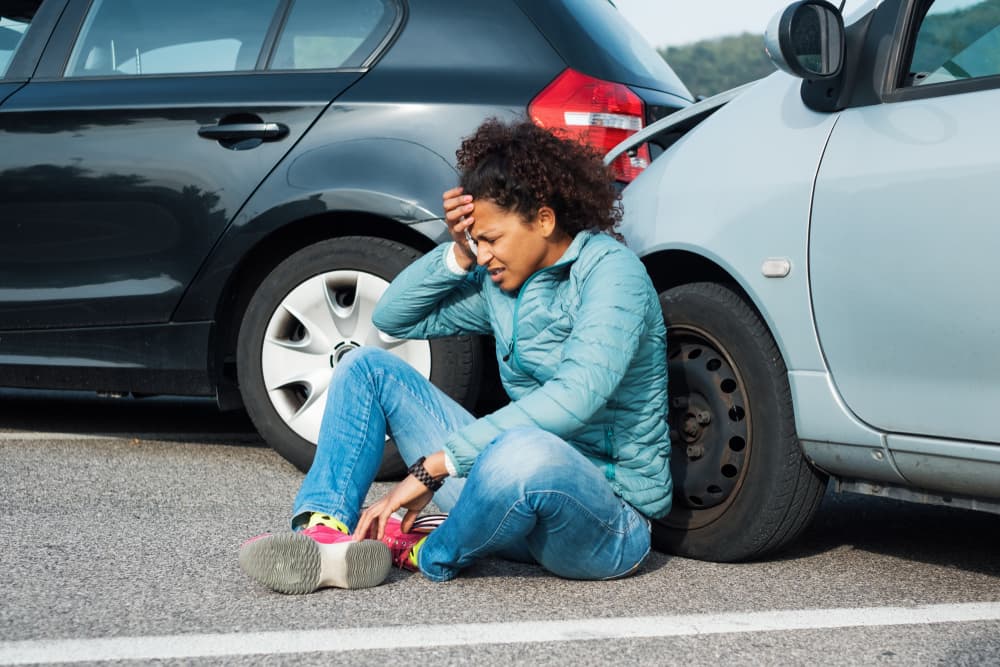
A car accident lawyer's role begins with an in-depth consultation to understand the specifics of your situation. This initial discussion allows the lawyer to gather all relevant details about the accident, your injuries, and any subsequent losses or damages you have incurred. Armed with this information, they can formulate a strategy tailored to your unique circumstances.
One of the next things a car accident lawyer will do is conduct a thorough investigation of the accident. This involves gathering and analyzing different pieces of evidence to construct a clear narrative of what happened.
Such evidence can include traffic camera footage, which may capture the accident as it occurred, providing an unbiased account of the events. They may also seek out and interview witnesses whose testimonies can offer additional perspectives on the accident, further clarifying the sequence of events.
Additionally, a car accident lawyer will review police and accident reports for any details someone might have overlooked. These reports often contain valuable information about the conditions at the accident scene, statements from the involved parties, and the initial assessment of fault.
In some cases, they might also consult with accident reconstruction professionals. These professionals can use the available data to recreate the accident scene, providing insights into how and why the accident occurred and who might be at fault.
Another important part of a car accident lawyer's role is dealing with insurance companies. Insurance adjusters often aim to settle claims quickly and for as little as possible. A lawyer will negotiate with these companies on your behalf to ensure that any settlement offer is fair and proportionate to the damages you have suffered. This includes compensation for medical expenses, lost income, vehicle repairs, and other related costs.
Also, a car accident lawyer provides legal representation if your case goes to court. Although many car accident claims reach settlements outside court, some require a trial. In such cases, your lawyer will prepare and present your case, advocating to protect your rights and ensure your perspective receives attention.
No Upfront Costs - Contingency Fee Basis
When seeking legal assistance after a car accident, one of many people's main concerns is the cost of hiring a lawyer. Understanding this concern, most car accident lawyers operate on a contingency fee basis, a payment structure that is both client-friendly and conducive to a mutual commitment to the case's success.
A contingency fee basis means that you, as the client, do not have to pay any upfront costs or hourly fees for legal representation. Instead, your lawyer's payment is contingent upon the successful resolution of your case, typically in the form of securing compensation for your damages. This arrangement is beneficial in several ways.
Firstly, it eliminates the financial barrier to seeking legal help. After a car accident, you may face mounting medical bills, repair costs, and possibly lost income due to your inability to work.
In such a scenario, additional legal fees will probably be too much. A contingency fee arrangement relieves this pressure, allowing you to get skilled legal representation without immediate financial strain.
Secondly, since the lawyer's payment depends on the case's successful outcome, they are inherently motivated to work harder to secure the best possible result for you. This means they will thoroughly investigate your case, negotiate assertively with insurance companies, and, if necessary, represent you in court.
You and your lawyer will agree upon the amount before formalizing the lawyer-client relationship. This percentage is typically a portion of the settlement amount or court award.
It's important to communicate clearly with your lawyer about the contingency fee agreement, including understanding any costs incurred while pursuing your claim, such as filing fees, obtaining medical records, or expert witness fees.
If the case does not result in a favorable outcome –the absence of evidence results in the court not awarding compensation – you will not owe any legal fees to your lawyer. The lawyer assumes the risk of not being paid for their time and effort should the case not succeed.
Contact a Car Accident Lawyer
Determining liability can be complicated in multi-vehicle accidents like being rear-ended and then hitting another car. However, with the assistance of a knowledgeable personal injury lawyer, you can get to the bottom of things and determine who is liable for your damages.
These legal professionals employ various resources, such as accident reconstruction specialists, witness statements, and meticulous analysis of the sequence of events, to build a robust case in your favor. With their experience, you can navigate the complexities of multi-vehicle accidents, protecting your rights and securing the compensation you deserve.
Remember, you don't have to navigate this situation on your own. Seeking legal assistance provides you with support and a proactive step toward safeguarding your rights and securing a fair resolution to your case.
